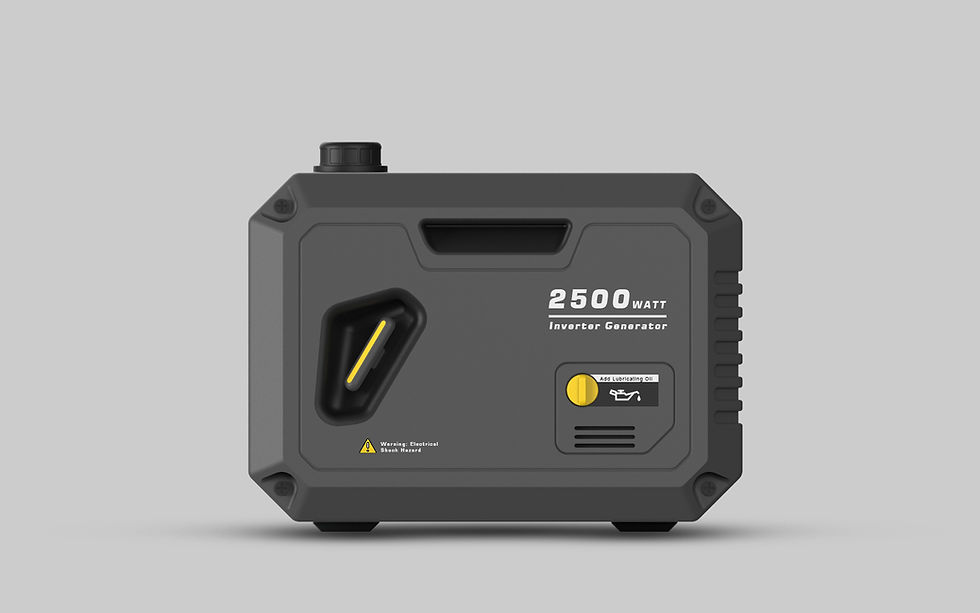Crowdfunding on Kickstarter - Hits, Misses and Lessons Learnt
- OUTDESIGN.CO
- Sep 22, 2017
- 6 min read

A successful crowdfunding campaign can provide great impetus - loyal fan base, press coverage, potential partnerships - after the product is launched. Over $3.2 bn has been pledged to projects on Kickstarter, making it one of the most popular crowdfunding platforms.
What did some do to raise successfully which others did not, and what strategies can you adopt? We analyzed several campaigns and have encapsulated key learnings here that can help you as you prepare to raise funds on Kickstarter.
1. Minimum Bells & Whistles. Maximum Customer Development.
The success of Pebble’s Kickstarter campaign has been well-documented, and with good reason. Once rejected by venture capitalists, the company shattered records and Pebble Time - that raised $20mn in 2015 - continues to hold the top spot of the most funded on Kickstarter. Pebble sold over 2 million watches and was acquired by Fitbit early 2017.
Pebble’s first watch was the InPulse. The company would regularly engage with their customers, send out updates and gather feedback. This communication was so effective that it helped the company build a strong trustworthy relationship with their customer community. When they started on working on Pebble, the founders leveraged this community and asked users what problems they faced with InPulse. The result was a product that the customers wanted.
Lessons learnt?
Don’t strive for perfection, especially at the prototyping stage. Instead, get something out quickly, gather feedback and keep improvising. This invaluable user feedback will lead you to a production ready version of your product. Use this guide to prototyping for hardware startups to learn different types of prototypes at various stages of product development.
Customer feedback is a gift and it must be leveraged effectively by a startup to discover, test and validate their core business assumptions. And a crowdfunding platform is a great way to do exactly that. It helps a startup build a loyal fanbase that should be nurtured.
Success of a crowdfunding campaign should not just be measured by how much was raised. A founder’s immediate priority must be to get the product in the hands of the backers and keep them happy. After all, these are the people who place the first bet on products that are yet to be built.
2. Choose wisely
Elevation dock, an iPhone dock raised over $1.4 mn from more than 12,500 backers on Kickstarter. It also became the first Kickstarter project to raise more than $1 mn in 2011. Wired called it ‘the dock Apple should have made’.
The product that piqued enough user interest and was embraced by social media, tech influencers and press, ran into manufacturing issues that set back the delivery date by over four months.
The company’s manufacturing partner couldn’t handle the volumes, forcing the company to look for alternates, thereby delaying the manufacturing and delivery.
Choosing the wrong manufacturing partner is one of the 11 reasons why hardware startups fail.
Lessons learnt?
It is imperative to conduct thorough diligence on your manufacturing partners before signing the contract. Do your research - review the manufacturer’s website, sales collateral, public documents and ask around. If possible, do reference checks to ask for feedback from their customers and ensure that you are dealing with a manufacturer and not a trading company.
Will the manufacturer be able to handle the volumes that you are expecting?
This is a very important question as you don’t want the manufacturer to sub-contract the work.
If engaging with a foreign manufacturer, understanding of each other’s cultures and work styles becomes important to developing a good relationship. Set realistic timelines and allow plenty of time to get everything done. Keep communication open, with your manufacturer as well as backers.
3. Cost - The devil is always in the detail!
The Coolest Cooler raised over $13mn on Kickstarter in 2014 from more than 62,000 backers, making it the second most-funded on Kickstarter at that time.
The fancy cooler came with a blender, bluetooth speaker, USB charger, cutting board and more. At $185, the deal was too good to be true. And that’s exactly what it turned out to be - several thousand disappointed backers are still waiting for their products.
A lot has already been written about how a cool product turned into a series of volatile situations - manufacturing issues, factory troubles, legal investigations, underestimated expenses, lack of funds and guesswork. The result was the company losing money, customers and credibility.
Lessons learnt?
One of the biggest reasons for what happened with the Coolest Cooler, was the underestimation of costs. Assembled in China, the Coolest Cooler is made from 150+ components with 150+ screws and the components are produced by 23 different suppliers. Add to that the cost of shipping from China and the cost of delivering the product to each customer.
List out prices of every component (BOM) of the product and even account for unexpected increase in raw prices. On top of that, consider a healthy margin so that any surprise costs don’t completely throw-off the manufacturing.
Remember that every stage in the hardware product lifecycle adds cost - Development, Scale and Manufacturing. So build in a significant margin for error on the expenses.
Other factors such as Certifications, Shipping, Warehousing etc can involve significant costs which should not be overlooked when estimating the total expenses.
4. Growth-hack your way to traction and retention
Superbook is a laptop dock that lets users convert their Android smartphone into a laptop. It is the most funded project in 'hardware' category on Kickstarter, raising over $3mn from more than 16,000 backers.
There is a lot to learn from the Superbook team on how to cultivate an audience and build traction. Since the product was built for Android, the team leveraged Android communities for promotion.
They encouraged audience to sign up and had created a massive 20,000-people email list before the campaign launched. The team continued to engage these users with promotional material, project related updates and invited them to the campaign launch.
Lessons learnt?
The initial traction will provide crucial to set the ball rolling. A strong first day could help you become one of Kickstarter’s ‘trending projects’, that can lead to interest from the community as well as the press.
A great way to build the initial traction is to rally your own network and leverage referrals. Trust is the foundation of any successful crowdfunding campaign and referrals are a great way to build trust and grow your community organically.
It is important to have a strong PR strategy around the campaign itself. Engage with influencers, journalists, bloggers. In your pitch, you need a narrative that weaves together your idea, vision and plan in a compelling manner.
The mode of your pitch might be different - online to backers on a crowdfunding site v/s an offline VC pitch - however, the underlying objective remains the same.
Timing is key; you don't need to wait for your campaign to start. Superbook team started building an audience roughly 4 months before the launch of their campaign.
When you do have an audience, it important to incentivize them. Superbook offered early bird specials for their first 100 backers. Rewards could be tiered and must be relevant to keep the audience engaged.
5. Imitation is not always flattery
Pressy, a product for Android devices raised $695,000 on Kickstarter in 2013. Soon after the project launched on Kickstarter, copycats launched a very similar project on Demohour and Alibaba.
Spurcycle was an innovative bicycle bell design that raised over $300K on Kickstarter and saw fake products being sold as soon as the company shipped their first batch out.
Copied versions of STIKBOX - a smartphone case that unfolds into a selfie stick - were being sold on AliExpress even before the company found a manufacturing partner.
Fidget Cube - a quirky gadget and the ninth most funded project on Kickstarter (raised $6.5 million) started delivering to backers, while there were numerous copies being sold on Alibaba and other sites, some offering more color variations.
Lessons learnt ?
An engaged user community can work like a moat. Build a brand that has customer value at its core and demonstrates exemplary customer experience.
Make sure that effective confidentiality and non-compete agreements are signed with contractors, suppliers and external partners before work kicks off.
An area that entrepreneurs often overlook is securing social media usernames, website domains etc. For example, in the case of Fidget Cube, while the founders secured Fidgetcube(dot)com, copycats used “.co” and “.store” to sell counterfeits.
If you are considering patenting your idea, you must tread cautiously. While patents may be helpful to some extent (depends on your product idea), they are a costly affair. Litigation can be expensive when fighting against someone with more resources and funds at their disposal, and can especially be very time consuming if the infringement happens by more than one company in a different country.















Comments